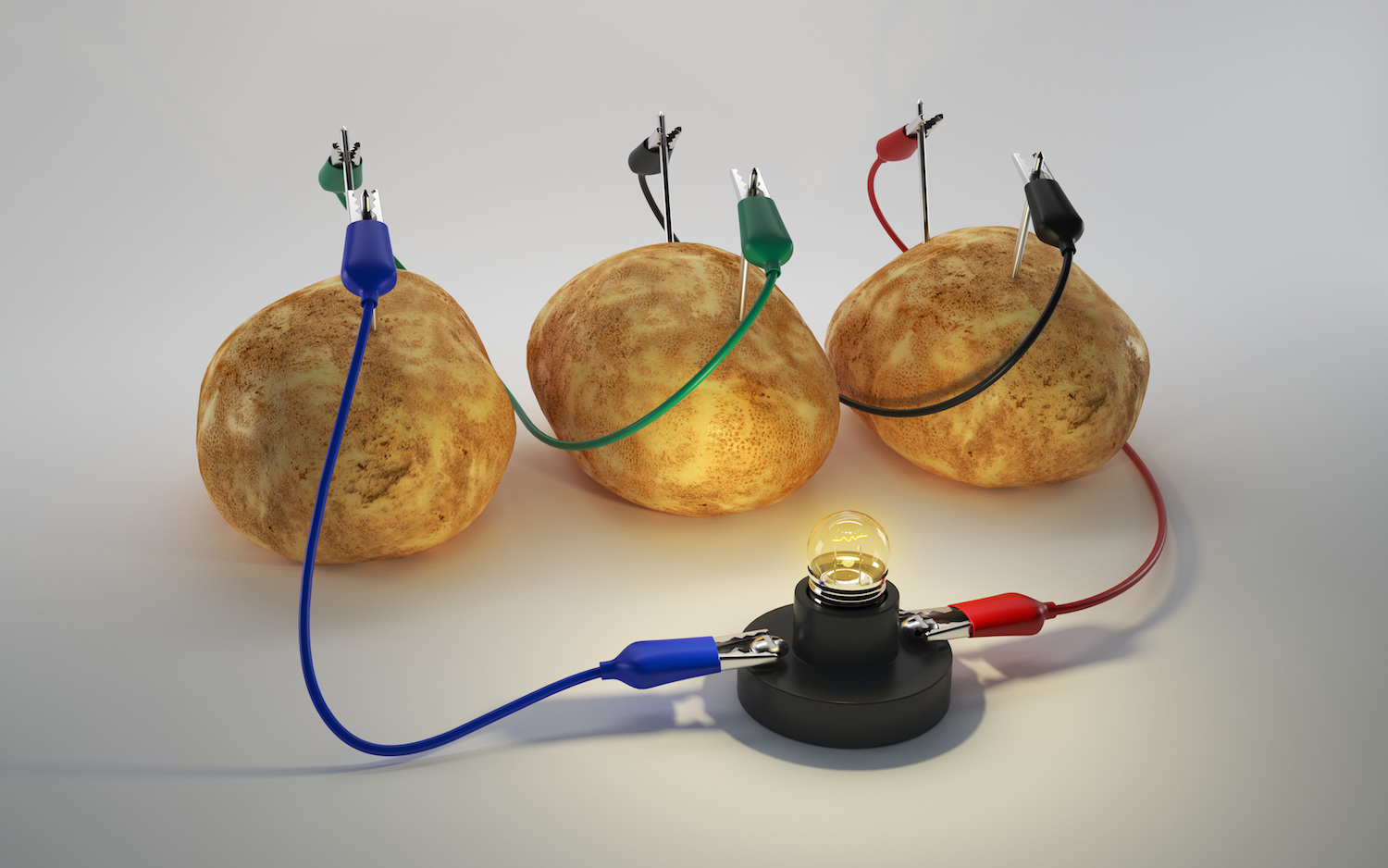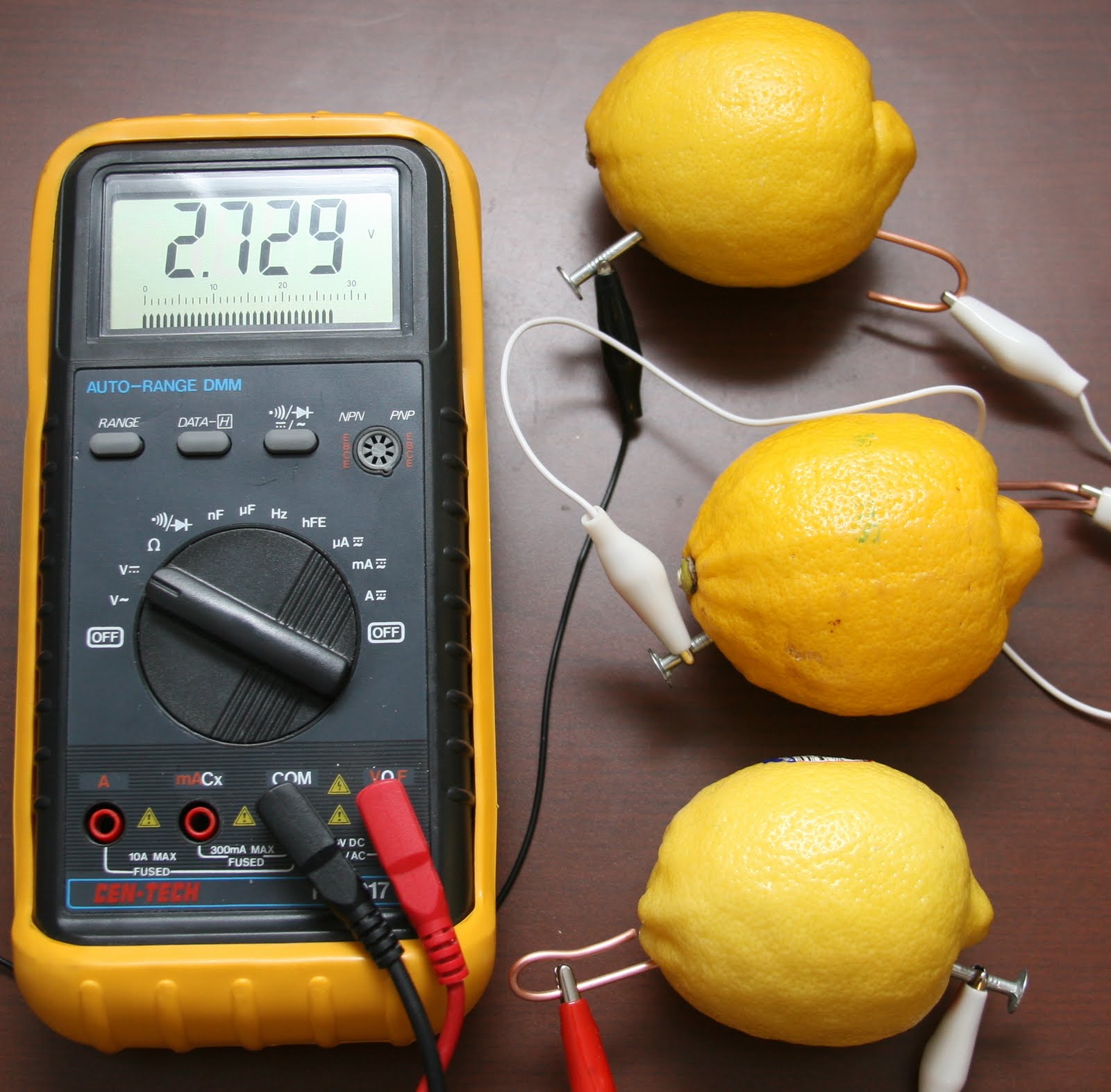Home > Sections > Energy > Biological Batteries
Last Updated: 14th June 2023
ARCHIVED ITEM: this page is no longer updated.
Biological Batteries
Keywords
Biology, battery, citrus fruit, potato, hydrogen ion, cathode, anode, voltage, current.
Introduction
Did you know that as well as using a physical battery in the form of a cell (using lithium ion), you can use certain biological items to make a battery?
Let's find out more.
What Can I Use?
It's true. You can use an everyday item to provide energy to a source. And I don't mean something like a table, or a utensil in your kitchen. So, what can you use?
If you go to the supermarket, you can buy the following shopping list:
- potatoes
- lemons
- limes
- oranges
- grapefruit
- apples
If you get any of those items, you can conduct electricity through them, and even make your own energy source.
How Does This Work?
Well, if you were to place two electrodes into one of the above fruit or vegetables, you would enable it to complete a circuit, and the acids and alkalis inside them create energy.
Still confused? Why not try it? You can get all the items you need from your school, or buy the pieces online, and test the theory yourself.
A boiled potato carries more capacity of energy than a raw potato. At least 10 times the amount.
If you were to connect several fruit or vegetables in a row, it will then create a parallel circuit. This creates more current. If you did the same in a series arrangement, the voltage is then increased.
Here's a YouTube Video detailing the largest lemon battery ever made, from Mark Rober:
The Chemistry
Basically, the citrus fruit has acidic juice inside. When you place a copper diode and a zinc anode to it, the juice inside reacts with the terminals. This is on the chemical level of hydrogen ions. If you connect these up using wires, to a lightbulb, it completes a circuit, so then enables power to transfer from the lemon to the bulb.
Applications
While not easy to maintain, or at all economical to use, experimenting with what you could power is interesting. It could power a lightbulb for a sustained amount of time, or get enough fruit, and you could power a simple wristwatch that requires a battery.
Too Long; Didn't Read
We can use fruit and vegetables to power small devices by connecting them in a circuit. You can increase the voltage or current by placing more of them together in a parallel or series circuit. They can power a light bulb or a small wristwatch.




 Energy Resources
Energy Resources

